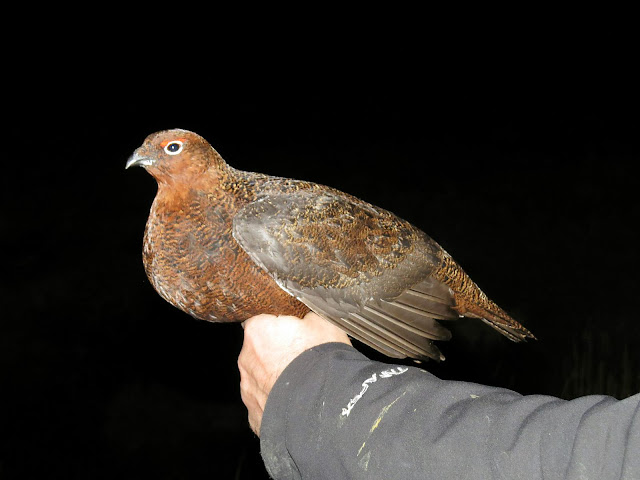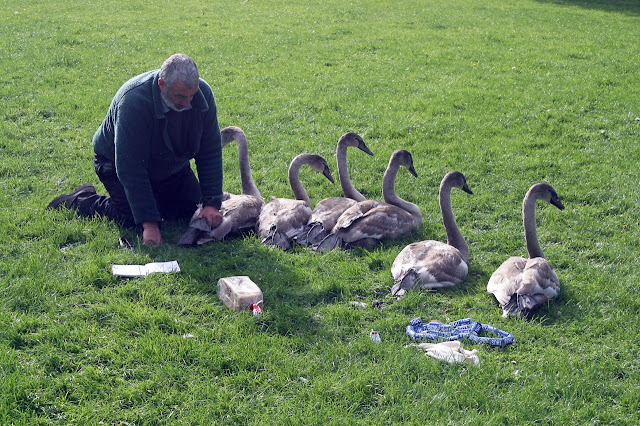Last night Sarah and I headed down the coast in the hope of mist-netting a few Curlews at a site we'd seen a good number (and lamped a couple) the previous night with Andre whilst out drag-netting Skylarks. The forecast, for high winds over the next week or two, meant this might be the only opportunity for a good while. As we arrived there were lots of birds already present - always a good sign. The first bird was caught whilst still setting the nets, a Turnstone! I wasn't expecting to catch Turnstones so that was a pleasant surprise.
Adult, winter plumage, Turnstone. Not a patch on its summer plumage but still pretty smart!
The first round of the nets yielded 2 Oystercatchers, 1 Curlew, 1 Redshank, 1 Bar-tailed Godwit and 13 more Turnstones!! This is more Turnstones than we usually catch in a year and one of them was already wearing a BTO ring so it will be very interesting to see where that came from. Interestingly, Turnstones are one of only three species that BTO ringers are required to ring on the tibia (above the knee), Ringed Plover and Purple Sandpiper being the other two. This is not to do with anything special anatomically its just that the constant battering the ring gets from being scraped against rocks and barnacles means they can lose their inscriptions during the life of the bird. It does mean the rings are very hard to see up amongst the feathers so if you are (lucky?) enough to find a dead one please check carefully for the presence of a concealed ring! Helps keep the photographers happy tho!
First winter Bar-tailed Godwit. We hardly ever catch these here in
West Wales so a nice unexpected bonus.
The final round of the nets produced, yep you've guessed it, more Turnstones (3). Can't wait for a period of calm weather now to go and see if this was a one-off or if it might prove to be a regular thing.
Have felt like this a few times myself in the past!












































